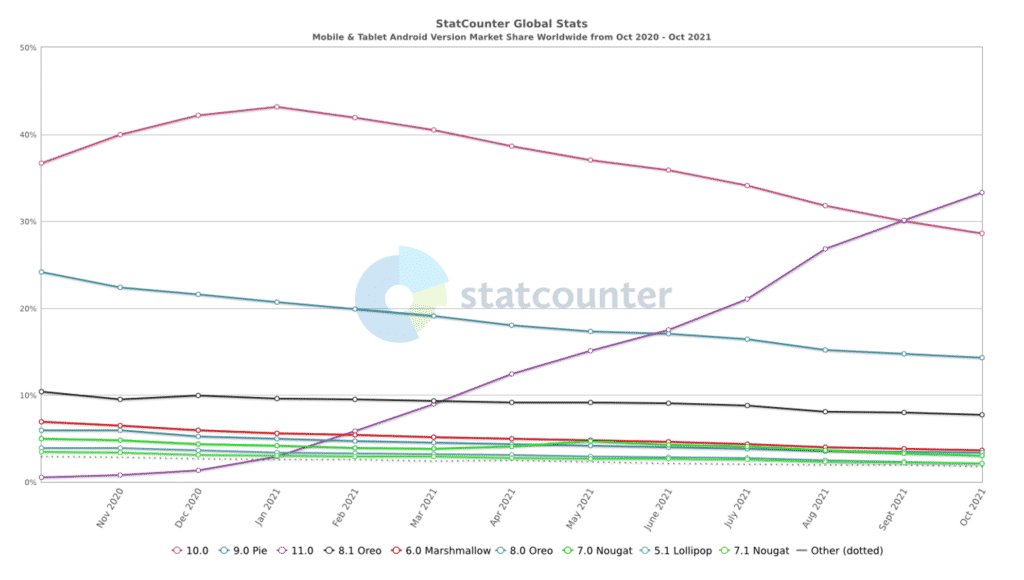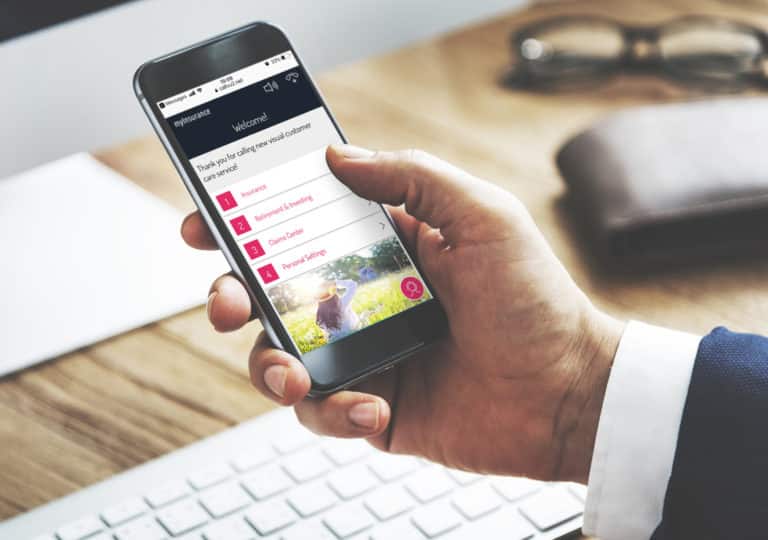First call resolution is an important component of turning customer support experiences into CSAT wins. Everybody loves first call resolution (FCR). Every call center is focused on resolving customer issues and problems quickly. Naturally, the ideal circumstance is to resolve most issues in a brief first call. The benefits for both customers and brand are apparent: for customers, fast answers enable end-users to get on with their lives more quickly. For brands, FCR means lower operational cost, potentially smaller call center teams, higher customer satisfaction, and potentially greater brand loyalty over time. Barring very unusual circumstances, high FCR rates are something that every contact center leader strives for.
FCR Rate
The most common measure of customer service first call resolution is an FCR rate. The FCR rate measures the percentage of total calls during a period that were resolved in just one phone interaction. First call resolution measurement provides a compelling measure of team and workflow excellence.
FCR measurement is not new. Almost since the advent of phone-based support teams, companies have looked for insights into the quality and efficiency of their teams. Resolution rate and first call resolution rate are easy to calculate and provide rich insight. In addition to multiple forms of support agent and customer feedback, FCR data deliver an objective measurement of service quality.
So, customer churn has a direct relationship to FCR. The critical question here is how does a company measure resolution. Newsletter Call Centre Helper reports that there are four common ways that companies measure resolution:
- No Repeat Calls: 38% of contact centers surveyed said they measured customer service FCR by counting the number of “no-repeat contacts” in a given period. The idea is that we can assume that a question is resolved if the customer doesn’t call back within a given period (e.g., a week.) The key challenge is that a customer may call a contact center about another matter during the measurement period, so relying on this “no news is good news” strategy may artificially lower FCR rate.
- Repeat Contact Reasons in the CRM: A more accurate approach than the former is analyzing data in the CRM or call center platform. That is, analyzing the reasons reported for calls. This eliminates the bias in the first methodology, provided that CSRs accurately report the customer issue during an engagement. 22% of surveyed companies reported using this metric.
- Post-Contact Survey: Many companies email or text a survey link to the caller, asking if the concern was resolved \. These surveys often include questions about the adeptness of the service desk rep in addition to a request for confirmation. 16% of companies reported using this measure.
- Asking the Customer During the Call: Some businesses have the representative ask the customer just before the conclusion of their call if their concerns were addressed thoroughly. One in ten companies reported this as their primary measurement approach for FCR
Low Versus High First Call Resolution Rate
Different categories and products drive very different FCR rates. In general, the more complex a product or service, the more likely you will have customers that need to make multiple calls to solve problems.
Smart CX leaders recognize that the trend in FCR rate is more important than the rate at a particular moment in time. It is often more productive to have FCR rate goals based on past rates than to evaluate and optimize your performance based on an arbitrary industry standard.
Enhancing First Call Resolution Rate
There are lots of components to driving an optimized first call resolution rate. No-code digital technology transforms contact center effectiveness in many different areas, and can often help facilitate higher FCR rates.
Customer Service Representative Team
Naturally, one of the most powerful ways to impact FCR is hiring, training, and retaining a great team of customer service representatives. Excellent personal service relies on this intelligent, engaged, and empathetic team. Agent training is the keystone for customer-centric organizations. Training and smart hiring ensure that every customer interaction is an excellent experience for end-users.
A variety of industry research supports that live agent training yields a higher fcr rate, contributing to customer retention and the highest possible customer loyalty.
How Technology Helps: Many contact centers utilize learning management systems (LMS) to ensure thorough and comprehensive training. Additionally, a robust Contact Center as a Service (CCaaS) and Workforce Engagement Management (WEM) platform deliver powerful dividends across all contact center metrics, including FCR.
Knowledge Base
Having an easily accessible repository of information and answers helps agents rapidly and comprehensively resolve issues on the first call. Better access to data consistently helps boost FCR.
How No-Code CX Automation Helps: With no-code, companies can easily create apps and workflows that make customer access to answers faster and easier. It can also power self-service experiences like chatbots that mitigate the need for support calls.
Identity Resolution
In categories where companies process, retain, and protect sensitive company information, CSRs must ensure the person’s identity they are speaking with. Caller ID, security questions, text- and app-delivered codes, and similar tech help ensure that personal information is well protected.
How No-Code CX Automation Helps: No code platforms enable contact centers to utilize visual IVR to verify identity before a call connects to a representative. Because no-code technology allows anyone to create powerful customer experiences without knowing code. It can dramatically shorten development time, cut costs, and enable testing to optimize every aspect of the customer experience. Quality platforms like FICX offer the choice of using native or third-party identity resolution technology in the experience.
Visual IVR Self-Service
About seven out of ten people process visual information best. Giving callers the option to receive a link to a text-based process on their electronic device can help customers answer their questions before the call is even transferred to an agent. Many call centers report that most of their calls are low-value — focused on straightforward questions for which agents can provide little or no incremental value.
When a company deploys a visual IVR option, they increase the odds that customers can resolve their own issues without speaking to a human. Many processes are straightforward enough that consumers can input a little information in an app and resolve their questions.
How No-Code CX Automation Helps: No-code platforms simplify and streamline deployment of visual IVR technology, as well as other digital CX tactics. Further, the modular nature of the solution enables CX teams to test and enhance a visual IVR experience so that every element of the workflow is intuitive and understandable. The FICX Platform is a leading provider of next-generation visual IVR that is fully featured and exceptionably easy for contact centers to implement.
Co-Browsing
Many people have difficulty navigating processes on web pages and in apps. Through screen sharing, CSRs can guide users through multi-step processes quickly and accurately. By securing customer permission and then sending a link via text or app push notification, the customer and representative can collaborate to take the steps necessary for real-time resolution.
How No-Code CX Automation Helps: You don’t need to use a no-code development platform to implement co-browsing, but such technology can make execution faster and easier. Platforms can also ensure that industry-standard security measures protect the customer and the company from data breaches. Many of the largest companies in the world have info-sec reviewed the FICX No-Code CX Automation Platform and found that it met or exceeded their benchmarks, for example.
Real-Time Document Sharing
With data revealing that every 1% increase in the FCR metric yields an equal boost to overall customer satisfaction, it follows that having easy ways to tackle all of the steps of a solution on the first call will deliver significant value. Through text and push hyperlinks, a contact center agent sends legal documents and acknowledgments for immediate e-signature and return instead of emailing or paper mail delivering the documents.
How No-Code CX Automation Helps: WIth no-code, business professionals without coding knowledge can incorporate real-time document (and many other technologies) sharing into a customer experience workflow. Since developer assistance is not required to deliver the experience, execution can be faster, easier, and less expensive. That means customer service delivery excellence is easier to produce.
Repeat Call Analytics
One of the best ways to develop an effective roadmap to reduce the number of repeat calls is to analyze why FCR did not occur. Data like this can inform many company teams so they can take positive actions to increase customer satisfaction. Repeated calls often center around a specific common issue or issues.
For example, repeat call analysis can pinpoint product issues and documentation issues that, when resolved, reduce or eliminate the need for many customer care contacts. Live customer service can be made unnecessary! Years ago, I worked with an ISP the received large numbers of calls from people struggling to set up accounts and pay their bills. The critical issue was a poorly designed UI that hid action buttons below the fold for the most common monitor resolutions. Shifting the layout in the “cart” and profile management screens dramatically reduced calls and increased sales conversion rates.
Another example was for a mobile app company expanding globally. Analysis of repeat calls showed spikes in repeat calls when they expanded into Southeast Asia. The reason was that in Southeast Asia, Android dominates, and many low-cost phones run on versions of Android that are no longer used in popular devices in North America and Europe. Unlike iOS, Android does not “force” software updates, and many lower-cost devices continue to leverage older, light versions of Android. The open Android system poses customer service challenges for lots of businesses globally. Even today, for example, almost 40% of Android devices in use worldwide run on Android versions launched before August 2017.

How No-Code CX Automation Helps: Data from a no-code CX platform can help inform analysis. Ensure that your no-code platform offers robust measurement and analytics.
Sudden Consumer Behavior Changes and First Call Resolution Rates
The pace of changes in customer media behavior is staggering, and the COVID-19 pandemic further accelerated that evolution. Consumer expectations about contact center and agent performance are constantly rising. New technologies can help companies anticipate and keep pace with these changes — if your company can move quickly.
How No-Code CX Automation Helps: By dramatically accelerating development and cutting operating costs, no-code platforms can dramatically enhance a companies competitiveness. Further, a quality provider like FICX can detect changes and new needs because of its visibility into hundreds of teams and organizations. They can ensure that your customer support team — and every service desk agent — access next-generation tactics and tools within the same toolset you already use. This rapid access to new technology can help improve first call resolution across existing and new contact resolution use cases.
FCR is Just One Component of Great CX
While answering questions in the first phone interaction is key to happier customers, there are other elements of robust contact center experiences. Even better than first call resolution is avoiding the need for a phone call in the first place. Call deflection through pleasing self-service experiences can be a great way of assuaging a dissatisfied customer.
Years ago, many people hated call deflection strategies because their objective often seemed to be avoiding phone calls at all costs. Today’s progressive CX leaders recognize that a thoughtful and well-architected self-service experience can even more positively impact customer satisfaction than excellent contact center software and teams. Data show that about 3/4 of people prefer self-service to get answers more quickly and easily than they can wait for a service desk agent. No call at all is perhaps the best measure of great customer service.
No-code CX automation streamlines and simplifies development of strong self-service experiences, and provides the data and tracking to access and optimize their customer service effectiveness. When more customers can solve their own problems, fcr performance becomes less of a primary consideration for a business.
Conclusions
Repeat callers are rarely a good thing. No matter how good your reps are, no one wants to talk to them if they don’t have to. The prevalence of tone and speech analytics products demonstrate that calling support people is not something people anticipate positively.
First call resolution is a great way to minimize customer service frustration. Measurement of this resolution metric is ubiquitous because it is such a great indicator of quality customer service experience.
No-code cx software can make your company more nimble in satisfying customers and controlling costs. By making app development more straightforward and efficient, it can enable you to proactively address experience challenges that result in multiple support calls to reach a satisfactory resolution.
Boost FCR By Deploying the FICX Platform
At FICX, we focus on ensuring that customers get a great experience with your brand and company in whatever way they choose to interact. Offering customers more and optimized options can have a tremendously positive impact on the overall brand experience. first contact resolution is just one of the ways we work to deliver value. It is just one contact center metric we help optimize.
Our company has been working with both contact centers and omnichannel CX professionals since 2013. We focus on ensuring that customers have access to all of the best strategies and tactics to improve customer experience. Including, but by no means limited to FCR. For more information on FICX and our solutions, visit our site.





